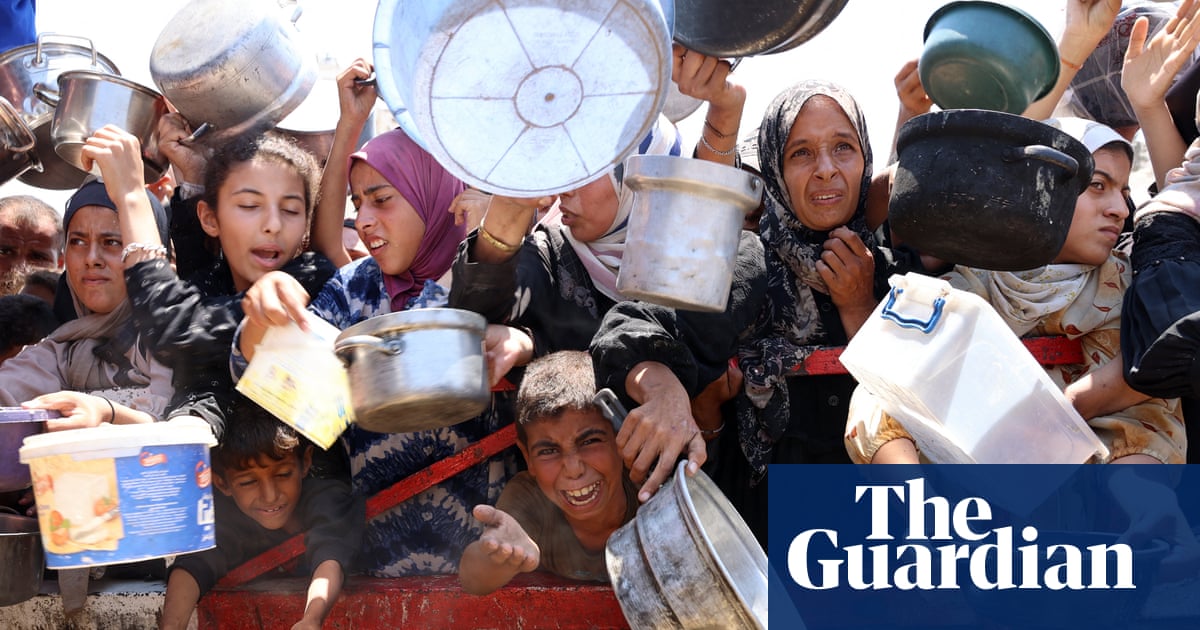Humanitarian experts and doctors are warning that children, elderly people and those with pre-existing health conditions are most at risk of famine in Gaza.
Pro-Israeli activists and Israel’s foreign ministry have tried to challenge the veracity of shocking pictures that have appeared in the international media, despite widespread and well-documented evidence of growing and worsening famine under conditions of Israeli restrictions on aid.
One such picture, which was used widely by the international media, including the Guardian, showed a young boy suffering from severe malnutrition, who it subsequently transpired also had a pre-existing health condition.
Experts say that children under the age of five, including those with other health issues, and elderly people, will always be most vulnerable in the circumstances of famine.
In recent days, aid agencies, governments and the UN’s food security monitor, the Integrated Food Security Phase Classification initiative (IPC), have provided evidence of increasing starvation, in particular among children under five.
Estimates from other recent famines have suggested that the risk of dying for children under five can be twice as high as for adults, with a greater risk for children with health issues. According to the health ministry in Gaza, 154 people have died of hunger since the start of the war, including 89 children.
Complicating the issue, say other experts, is the fact that children weakened by malnourishment are vulnerable to other potentially fatal diseases, especially if they are living in the open and in unsanitary conditions.
Underlying the risk for the young and those with other health complications, Marina Adrianopoli, a technical expert in the field of undernutrition at the World Health Organization, warned of the risk to “vulnerable children [who] do not have access to services for the prevention and management of acute malnutrition” a situation she said that can lead “to widespread diseases, malnutrition and starvation”.
“Acute malnutrition is a life-threatening condition in its most severe form, which requires urgent treatment,” she said. “When a child suffers from severe acute malnutrition, especially when associated with medical complications, this child is at high risk of mortality.”
Adrianopoli said: “Children with acute malnutrition need to be immediately identified and referred for the appropriate treatment which is needed for their survival. Children with wasting are extremely vulnerable, their immune system is compromised, their susceptibility to infections increases rapidly. Saving their lives and averting avoidable mortality can only happen by providing adequate treatment.”
Earlier this month, Médecins Sans Frontières (MSF) reported an alarming rise in malnutrition at its clinics, warning that 25% of the children and pregnant and breastfeeding women that it screened were malnourished, adding that cases of severe malnutrition in children under five had tripled in just two weeks.
Speaking on Wednesday from Deir al-Balah in Gaza, the MSF doctor Mohammed Fadlalla “categorically rejected the cynical and cruel narrative” that there is no hunger in Gaza.
“Malnutrition is affecting everyone, the sick, the healthy and the old because no one is eating enough. But the people who are most affected tend to be the most vulnerable: children from zero-five, the elderly, those with pre-existing conditions like diabetes,” he said.
The findings and testimony from MSF were amplified this week by the latest alert from the IPC, the UN food security monitor whose data collection and cautious deliberations on determining whether famine exists are regarded as the gold standard on the issue.
An IPC alert on Monday warned that two out of the three famine thresholds have now been breached in parts of Gaza, with the Food and Agriculture Organization of the UN (FAO), the UN World Food Programme (WFP) and Unicef warning that time is running out to mount a full-scale humanitarian response.
The WFP said: “Food consumption – the first core famine indicator – has plummeted in Gaza since the last IPC Update in May 2025, with data showing that more than one in three people (39%) are now going days at a time without eating, meaning more than 500,000 people – nearly a quarter of Gaza’s population – are enduring famine-like conditions, while the remaining population is facing emergency levels of hunger.”
It continued: “Acute malnutrition – the second core famine indicator – inside Gaza has risen at an unprecedented rate. In Gaza City, malnutrition levels among children under five have quadrupled in two months, reaching 16.5%. This signals a critical deterioration in nutritional status and a sharp rise in the risk of death from hunger and malnutrition.”
The sense of urgency is driven by the fact that the impact of famine on the body proceeds slowly at first, then very rapidly as the body uses available fat before beginning to break down muscle cells, which release chemicals, including potassium, chloride and sodium, and cellular debris into the bloodstream, rapidly triggering more serious health issues, including severe malnutrition in young children.
Israel’s prime minister, Benjamin Netanyahu, has tried to suggest untruthfully there is “no starvation in Gaza”.


